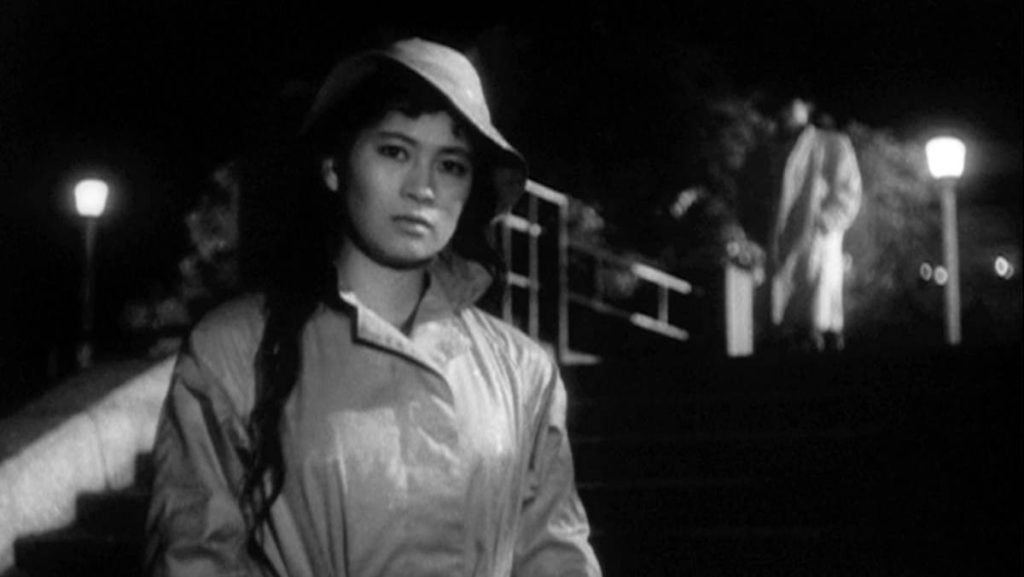Japanese cinema from the 1950s remains one of the strongest periods in film ever. With masters in cinema such as Yasujirō Ozu, Keisuke Kinoshita, and, of course, the legendary Akira Kurosawa, delivering films that would be considered masterpieces even decades later. Where these big names get most of the attention, this excellence continued into the smaller directors.
One being Koreyoshi Kurahara, who made his directorial debut in 1957 with I Am Waiting. Former boxer Jōji Shimaki (Yujiro Ishihara) meets and subsequently falls in love with a singer named Saeko (Mie Kitahara), who is trying to escape her life working for a group of gangsters.
Easily the most effective part of I Am Waiting is the broken characters who have believable and powerful ghosts haunting them from their pasts. Especially in the first half of the film, this provides the characters a deeper meaning and purpose, while also setting up clear payoffs for later in the film. Sadly, as the movie continues, it turns these emotional motivations into more and more forced arcs that fail to stick the landing at the end.
What does continue to stand out throughout the entire film, is the cinematography from Kurataro Takamura. How Takamura composes each shot, highlighting the natural flow of whichever environment is featured, is honestly breathtaking at points. Not only is the framing constantly impressive, but there are multiple times where the film really pushes what the camera could do. Leading to some really clever transitions and camera movements, that stand out, especially for being created in the time it was.
The acting from both Yujiro Ishihara and Mie Kitahara are also pretty impressive here. They both do a fine job at balancing the effects of the ghosts from their pasts, while also being present. This is not always the easiest thing for actors to do, but both Ishihara and Kitahara craft their performances smartly and effectively.
These elements definitely make I Am Waiting a watchable film, and the first half really does deliver. It sets up interesting characters with legitimately solid depth and ideas, but as the film goes on it begins to focus too much on the gangster portion of its plot, thus losing focus of the more powerful sides of the story.

